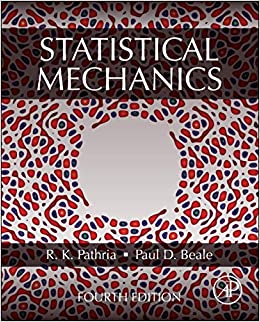The pressure and number density and energy density for an ideal Fermi gas are given by [P(mu,
Question:
The pressure and number density and energy density for an ideal Fermi gas are given by
\[P(\mu, T)=k T \int a(\varepsilon) \ln \left(1+e^{-\beta(\varepsilon-\mu)}\right) d \varepsilon\]
where \(a(\varepsilon)\) is the density of states per unit volume. Using \(a(\varepsilon)\) for free spin-1/2 fermions
\[a(\varepsilon)=\frac{\sqrt{2 m^{3} \varepsilon}}{\pi^{2} \hbar^{3}}\]
show that for \(\exp (\beta \mu) \ll 1\), the density and pressure behave as an ideal gas (other than a spin degeneracy factor in the density): \(n \approx 2 e^{\beta \mu} / \lambda^{3}\) and \(P \approx n k T\). Next, allowing the density of states \(a(\varepsilon)\) to be an arbitrary function, calculate the leading order low-temperature dependence of the specific heat at constant chemical potential, and show that
\[c_{\mu}=T\left(\frac{\partial s}{\partial T}\right)_{\mu}=T\left(\frac{\partial^{2} P}{\partial T^{2}}\right)_{\mu} \approx \frac{\pi^{2}}{3} k^{2} T a\left(\varepsilon_{F}\right)\]
This implies that the measurement of the linear dependence of the specific heat on temperature gives a direct measure of the density of states at the Fermi energy.
Step by Step Answer:






